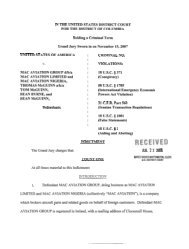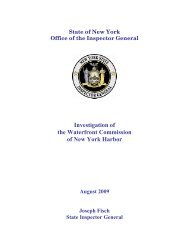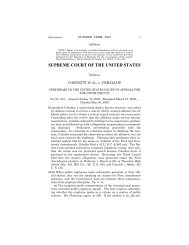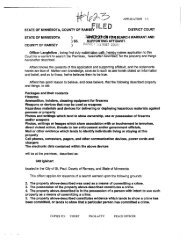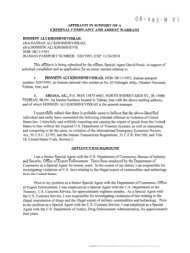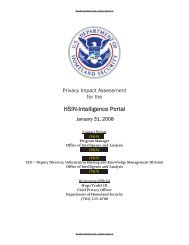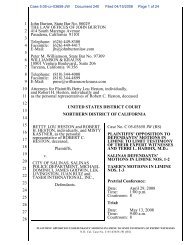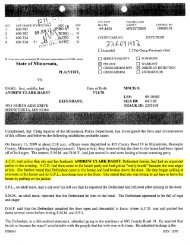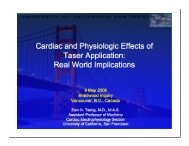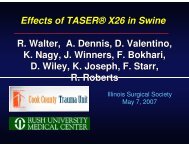TASER Electronic Control Devices Review Of Safety Literature
TASER Electronic Control Devices Review Of Safety Literature
TASER Electronic Control Devices Review Of Safety Literature
You also want an ePaper? Increase the reach of your titles
YUMPU automatically turns print PDFs into web optimized ePapers that Google loves.
John Webster, a professor of biomedical engineering at the University of<br />
Wisconsin, takes a different position, dismissing as "not an issue" a connection<br />
between stun guns and ventricular fibrillation. Webster conducted<br />
a study into how close to the heart a stun gun strike would have to be to<br />
produce ventricular fibrillation - less than 17 millimetres. "It's a few-permillion<br />
kind of thing," Webster said in the National <strong>Review</strong> of Medicine of<br />
the chances a stun gun probe could produce death. "You've got to have a<br />
very thin person with a dart between his ribs right over his heart."<br />
2.6. Human Studies Show that the <strong>TASER</strong> ECDs Do Not Affect the Heart<br />
The first published human ECD study was performed under the auspices of the<br />
Hennepin County (MN) Medical Center. 65 Adult volunteers (n=66, age 40.3 ± 6.8<br />
years, 65 male, 1 female) had these cardiovascular histories: 6 hypertension, 6<br />
hypercholesterolemia, 1 each of myocardial infarction and bypass grafting, heart<br />
failure, coronary disease, transient ischemic attack, and diabetes with 51 reporting<br />
no significant history. Each was shot in the back with standard <strong>TASER</strong> device<br />
barbs and received the full 5-second application from the law enforcement model<br />
<strong>TASER</strong> X26. Each had blood drawn before, immediately after, and at 16 and 24<br />
hours post-exposure. Troponin I, potassium, creatine kinase, lactate, and myoglobin<br />
were tested. A 12-lead EKG (electrocardiogram) was recorded in 32 randomly<br />
chosen subjects at each venipuncture. A blinded cardiologist read all 128<br />
EKGs in random order. 66<br />
There were no significant changes in any of the serum markers. Thirty of the 32<br />
EKG subgroup had normal EKGs for all 4 recordings. One subject had all 4 recordings<br />
interpreted as left ventricular hypertrophy and another had occasional<br />
sinus pauses in all 4 recordings. The <strong>TASER</strong> ECD did not affect cardiac or skeletal<br />
serum markers or cause serial EKG changes. In other words, no sign of any<br />
of the effects on the heart tested for was found in any of the volunteers with significant<br />
medical conditions.<br />
Other human studies, through the University of California at San Diego, found no<br />
negative effects on the heart in the volunteers exposed to the <strong>TASER</strong> devices. 67-<br />
69 Raymond Ideker, a recognized authority on VF, analyzed the <strong>TASER</strong> X26 output<br />
and calculated that it should have a 28:1 safety margin for the typical adult<br />
human. 70<br />
Continuous echocardiographic monitoring of the human heart during ECD applications<br />
show no cardiac capture — even in exercised subjects. 71<br />
There Are No Negative Human or Dog Studies<br />
Every study done with humans or dogs with <strong>TASER</strong> ECD discharges has found<br />
no clinically significant deleterious effects directly caused by the ECD. There<br />
36




